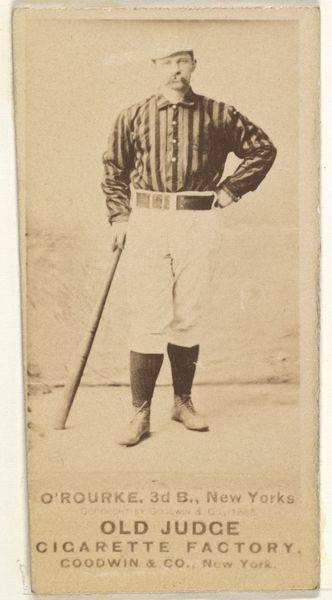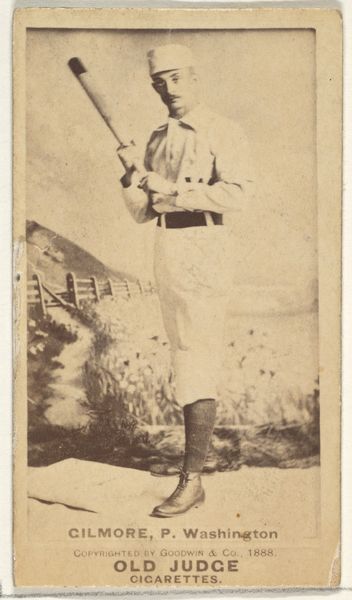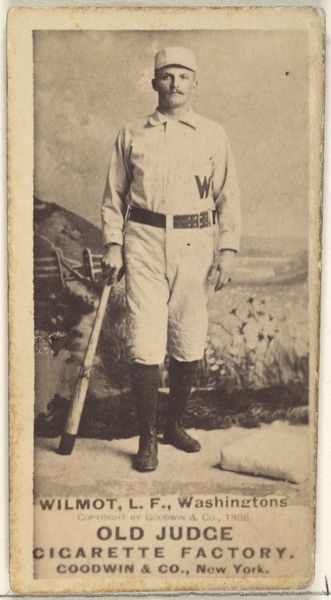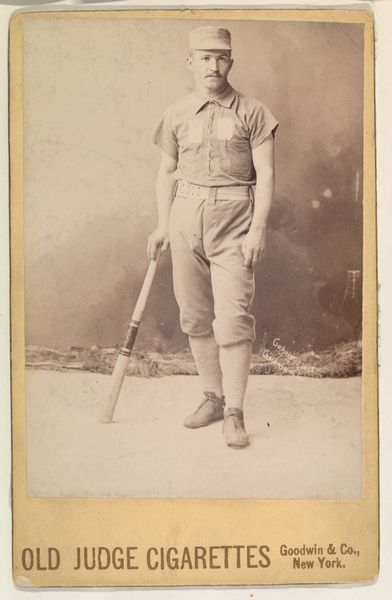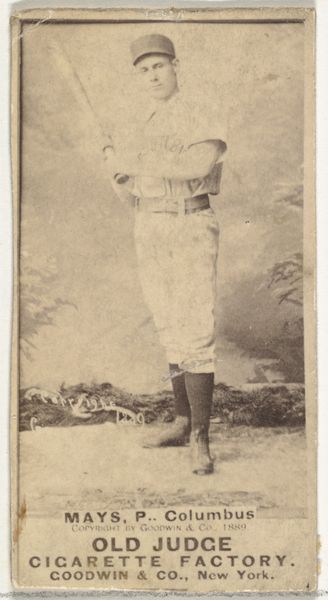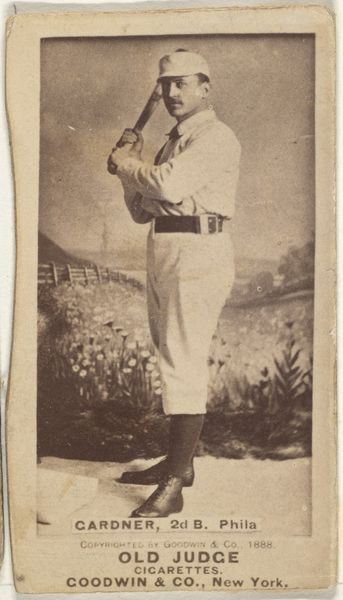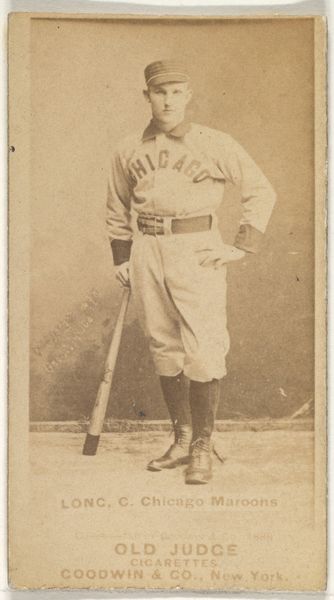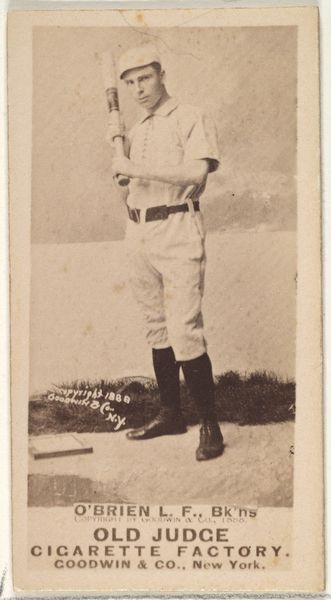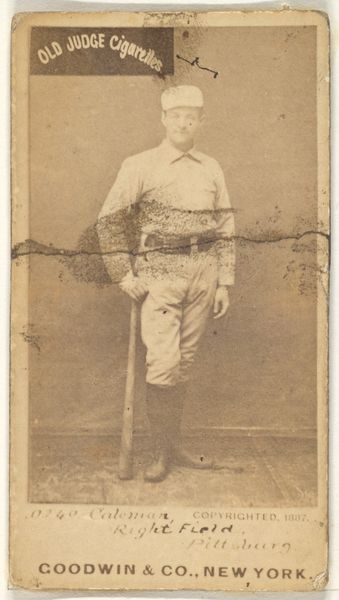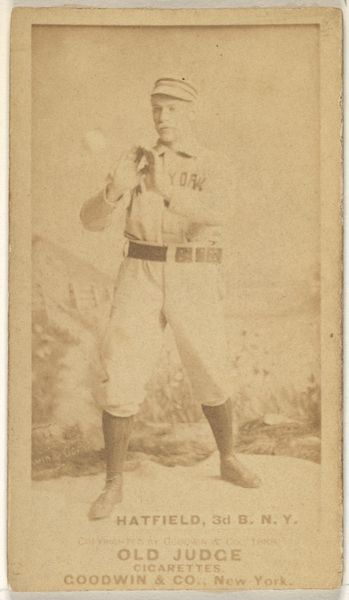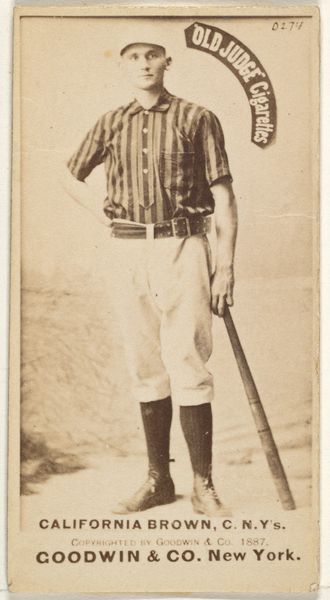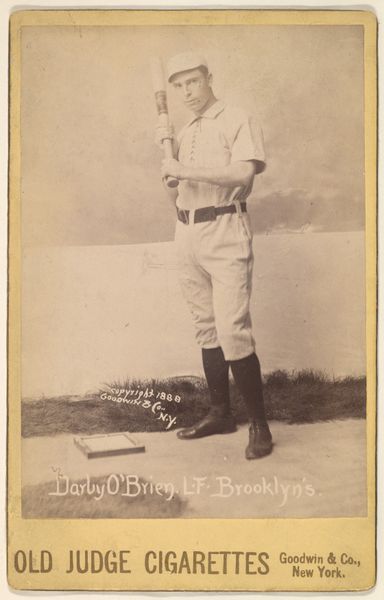
William Ellsworth "Dummy" Hoy, Center Field, Washington Nationals, from the Old Judge series (N172) for Old Judge Cigarettes 1888
0:00
0:00
print, photography
#
portrait
# print
#
baseball
#
photography
#
men
Dimensions: sheet: 2 11/16 x 1 3/8 in. (6.9 x 3.5 cm)
Copyright: Public Domain
Curator: This rather serious portrait captures William Ellsworth “Dummy” Hoy. Produced around 1888 by Goodwin & Company as part of the Old Judge Cigarettes series, it’s a photographic print, a piece of baseball history enshrined on card stock, currently residing here at The Met. Editor: He does look quite serious, doesn’t he? There's a somber quality to the sepia tones that seems to clash with the dynamism we usually associate with baseball. His pose feels rather stiff, almost staged, despite him being positioned in the supposed context of the baseball field, Curator: Indeed, this formality was characteristic of the era, reflecting photographic conventions of the time. These cards weren’t just about the sport; they were powerful marketing tools, shaping the public image of these athletes. Note the brand name prominently displayed. But more than a sports card, it also documents the life and accomplishments of a notable figure who broke many barriers. Editor: Absolutely, considering Hoy’s story as a deaf player navigating a hearing world brings layers of meaning to this portrait. It prompts questions about accessibility, communication, and representation within professional sports, then and now. He used hand signals to communicate, something commonplace in today’s game. Curator: His legacy goes well beyond baseball statistics. The "Old Judge" series itself tells a fascinating story about the commodification of sports and celebrity culture at the turn of the century, a time when baseball was rapidly becoming "America's pastime." These cards were instrumental in building that phenomenon. They circulated widely, appearing in tobacco products, available and accessible to mass audiences. Editor: Exactly, this object exists at the intersection of several complex histories—sport, disability, and capitalism. How do we reconcile the progressive aspects of his achievement with the exploitative marketing strategies behind it? This photograph opens up discussions about how we remember, celebrate, and contextualize historical figures within these intricate webs of power and influence. And even his nickname: a commentary on how the non-disabled world often addresses the deaf and hard-of-hearing community. Curator: A crucial point. Hopefully, encountering this object has moved you to think critically not just about baseball history, but the societal frameworks that condition how we understand and consume it. Editor: Agreed. A simple baseball card suddenly becomes a complex artifact when we look at its production and reception through the lens of intersectionality.
Comments
No comments
Be the first to comment and join the conversation on the ultimate creative platform.

